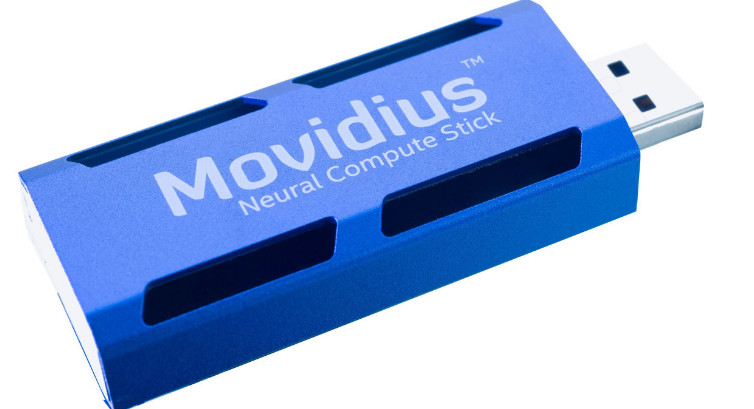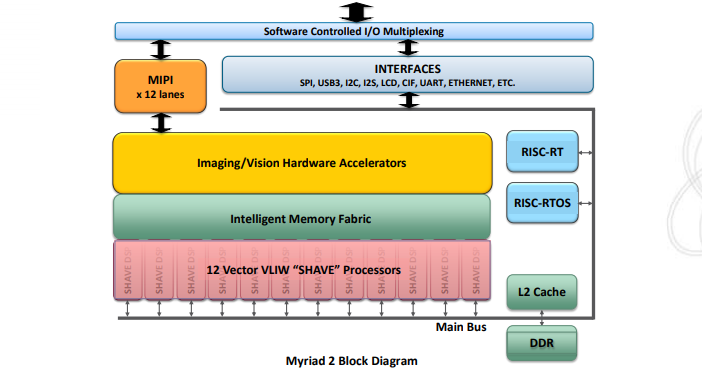Another very interesting development in Machine Intelligence is the release of the Neural Compute Stick by Intel. The Neural Compute Stick is a miniature deep learning hardware development platform that you can use to prototype, tune, and validate, your AI programs, specifically Deep Neural Networks. It works well with the Raspberry Pi 3 so, this stick brings hardware-accelerated AI to the maker community!
A first look at the Neural Compute Stick
In 2016 Intel bought the Movidius company for $400M. Movidius is a company that develops low-power, high-performance chips for accelerating computer vision applications. The processor that the Neural Compute stick uses is the Movidius Myriad 2 Vision processor.
The Myriad 2 processor is a very impressive chip. If we take a look at the block diagram of the chip we can see that it contains a lot of hardware inside.
- 12 128-bit vector VLIW (Very long instruction word) processors
- Configurable hardware accelerators for image and vision processing
- 2 32-bit RISC Processors
- 2 MB RAM memory
- 600 MHz operation frequency
- I2C, SPI, I2S
- USB3
- Ultra low power, less than 500mW
What is a VLIW processor?
Very long instruction word (VLIW) refers to instruction set architectures designed to exploit instruction level parallelism (ILP). Whereas conventional central processing units (CPU, processor) mostly allow programs to specify instructions to execute in sequence only, a VLIW processor allows programs to explicitly specify instructions to execute in parallel. This design is intended to allow higher performance without the complexity inherent in some other designs.
Myriad 2 Applications
This chip is a beast. It contains 12 128bit parallel processors! This is an extremely advanced technology and it is available to makers! I am really excited to try this thing. We live in an amazing era, where computing power is almost free!
The possible applications of this chip are many. The most obvious one is of course Machine Vision. The Raspberry Pi 3 is capable of executing simple machine vision tasks but with this stick, it can do amazing things.
From the datasheet of the chip, I got the following sentence which describes how powerful this chip is. Check it out:
“The adaptable computational imaging pipeline serves various camera configurations and supports a complete range of auto-functions. It can process still image and video at various configurations, including 13 Mpixel at 48 fps or 4K resolution at 60 fps”
This stick can process 4K video at 60 fps! My desktop computer with an i7 processor can’t do that. This chip is years ahead in Machine Vision.
The chip manufacturer shares with us some possible applications
- Computational photography (rapid AutoFocus, HDR, extreme low light)
- 3D modeling and scanning
- Indoor navigation
- 360⁰ panoramic video
- Visual analytics
- Immersive gaming, augmented reality
- Gesture recognition
Impressive stuff in my opinion.
Of course, since this chip is so advanced it also comes with a higher price. The chip costs around $100 and you can get it here.
This is not a chip for everyone. This is a state of the art AI chip. But this chip, really demonstrates what is coming. In a few years, a chip like this will be commonplace. So, I need to get one to start playing with it. I am really excited to use such an amazing piece of hardware. Stay tuned.


Leave A Comment